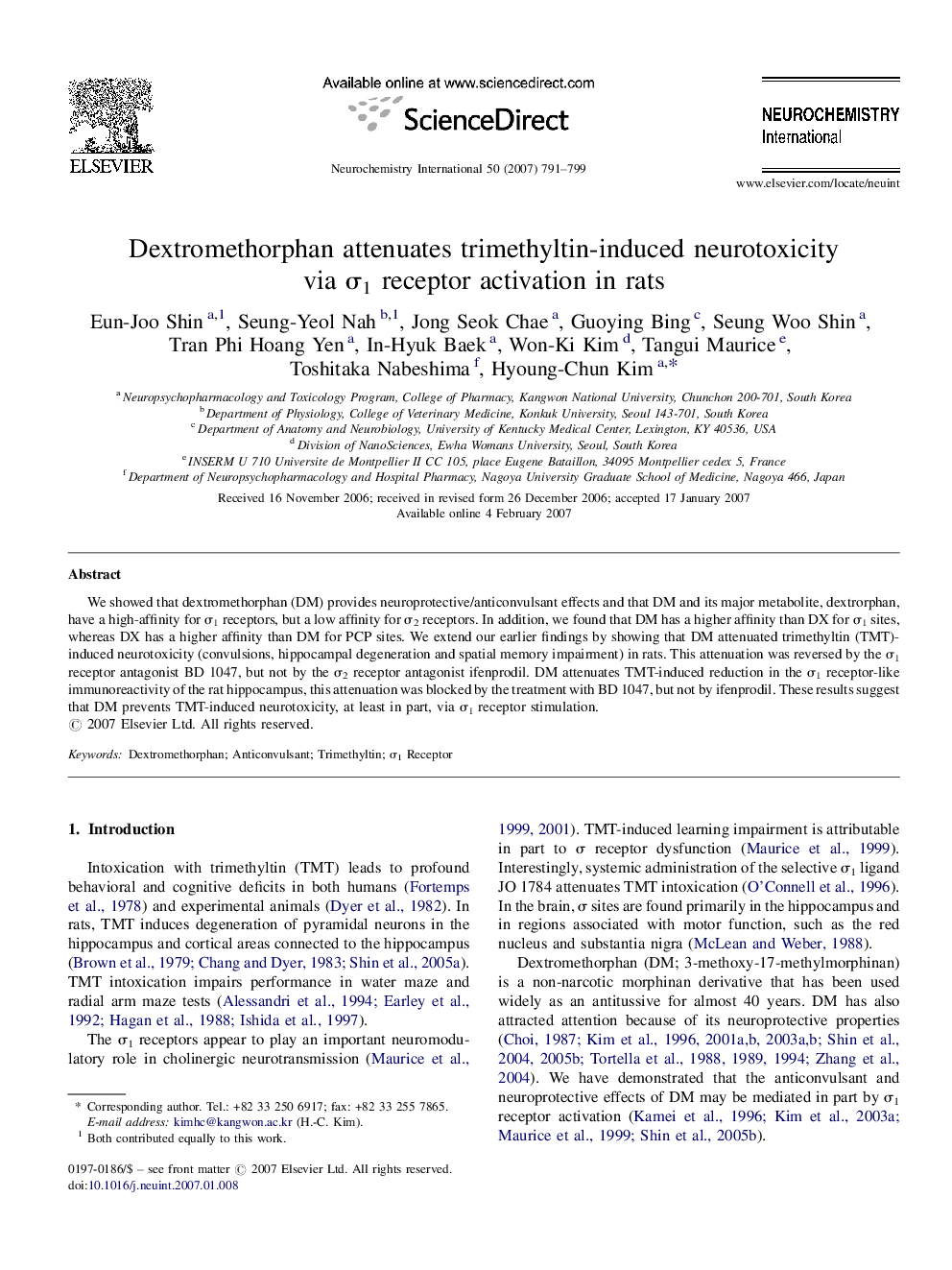| Article ID | Journal | Published Year | Pages | File Type |
|---|---|---|---|---|
| 2202077 | Neurochemistry International | 2007 | 9 Pages |
We showed that dextromethorphan (DM) provides neuroprotective/anticonvulsant effects and that DM and its major metabolite, dextrorphan, have a high-affinity for σ1 receptors, but a low affinity for σ2 receptors. In addition, we found that DM has a higher affinity than DX for σ1 sites, whereas DX has a higher affinity than DM for PCP sites. We extend our earlier findings by showing that DM attenuated trimethyltin (TMT)-induced neurotoxicity (convulsions, hippocampal degeneration and spatial memory impairment) in rats. This attenuation was reversed by the σ1 receptor antagonist BD 1047, but not by the σ2 receptor antagonist ifenprodil. DM attenuates TMT-induced reduction in the σ1 receptor-like immunoreactivity of the rat hippocampus, this attenuation was blocked by the treatment with BD 1047, but not by ifenprodil. These results suggest that DM prevents TMT-induced neurotoxicity, at least in part, via σ1 receptor stimulation.
